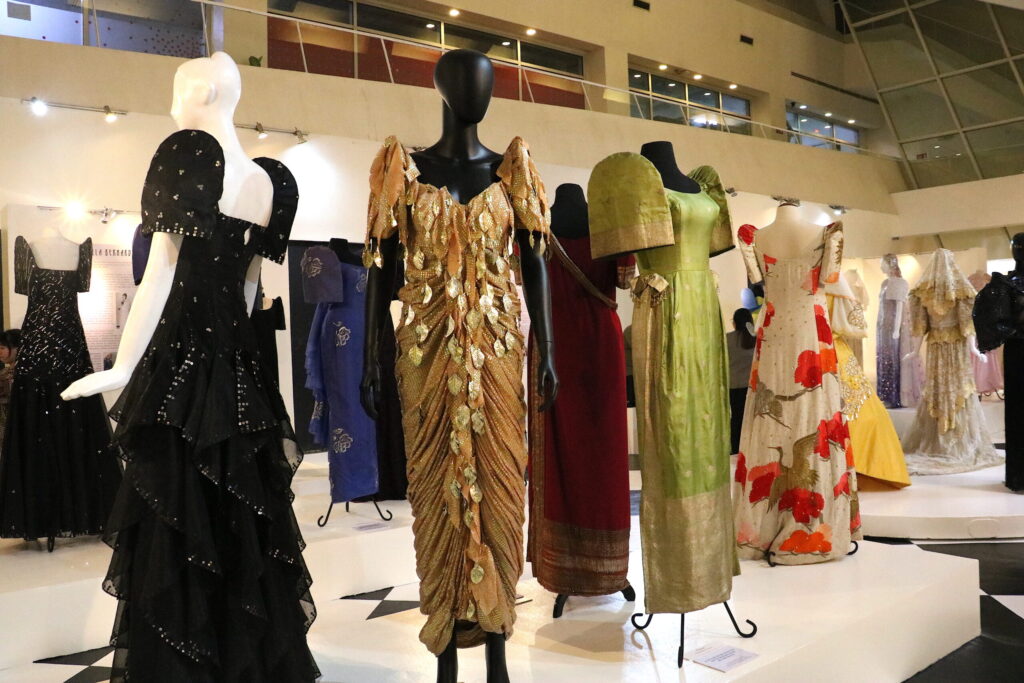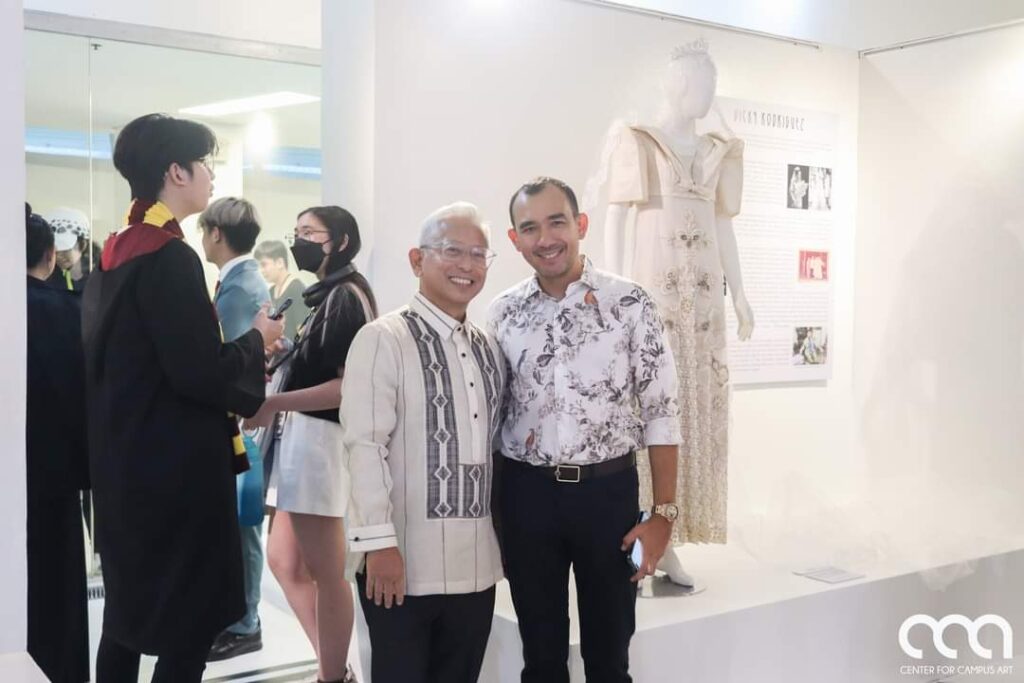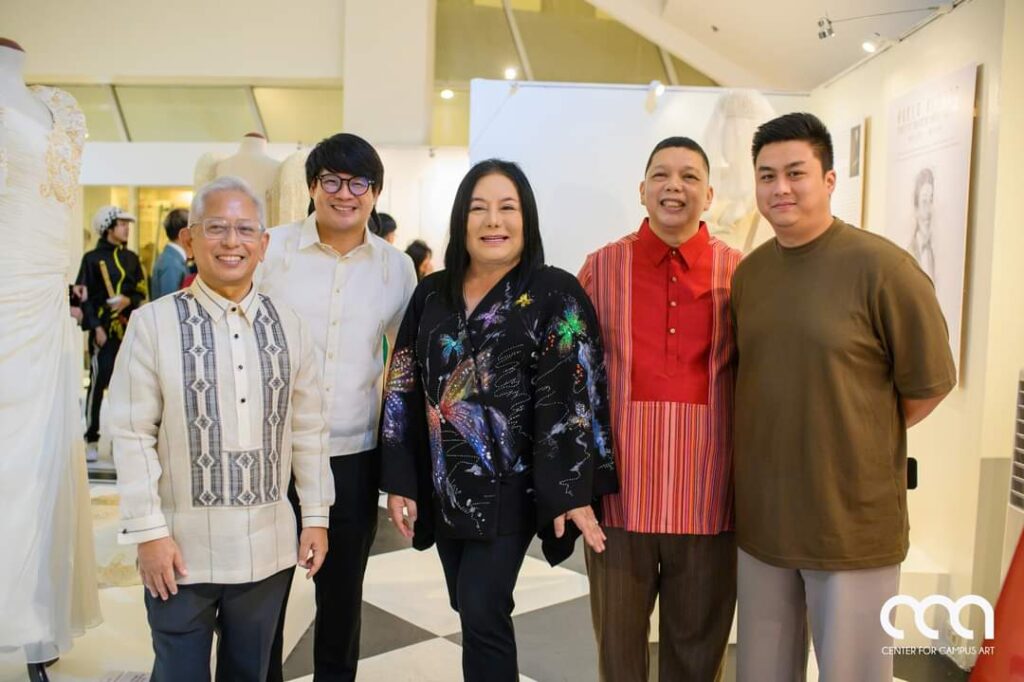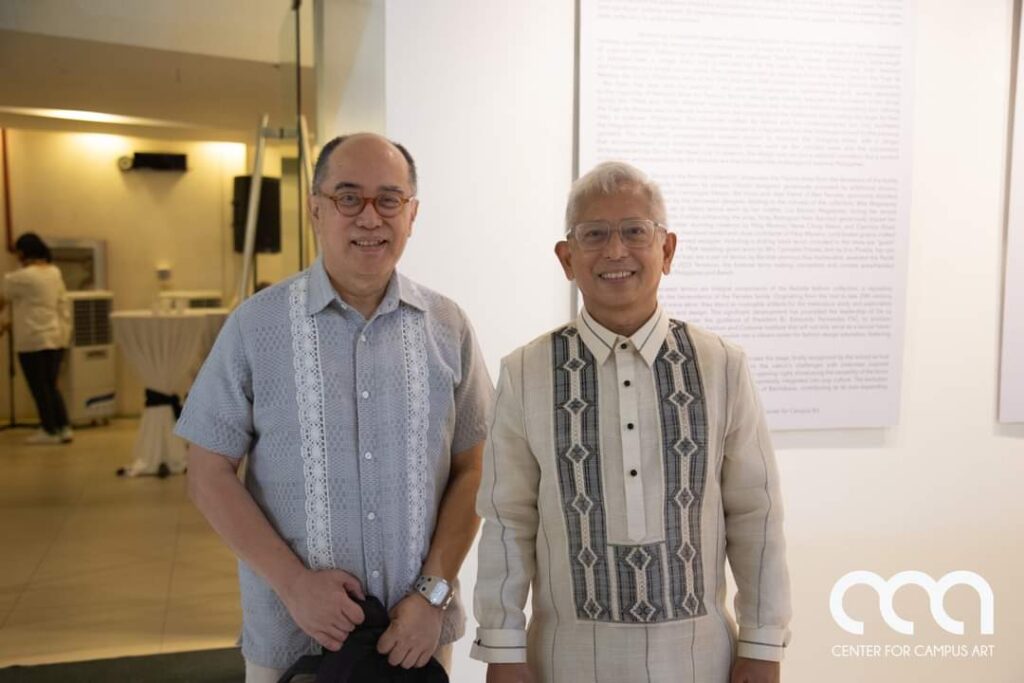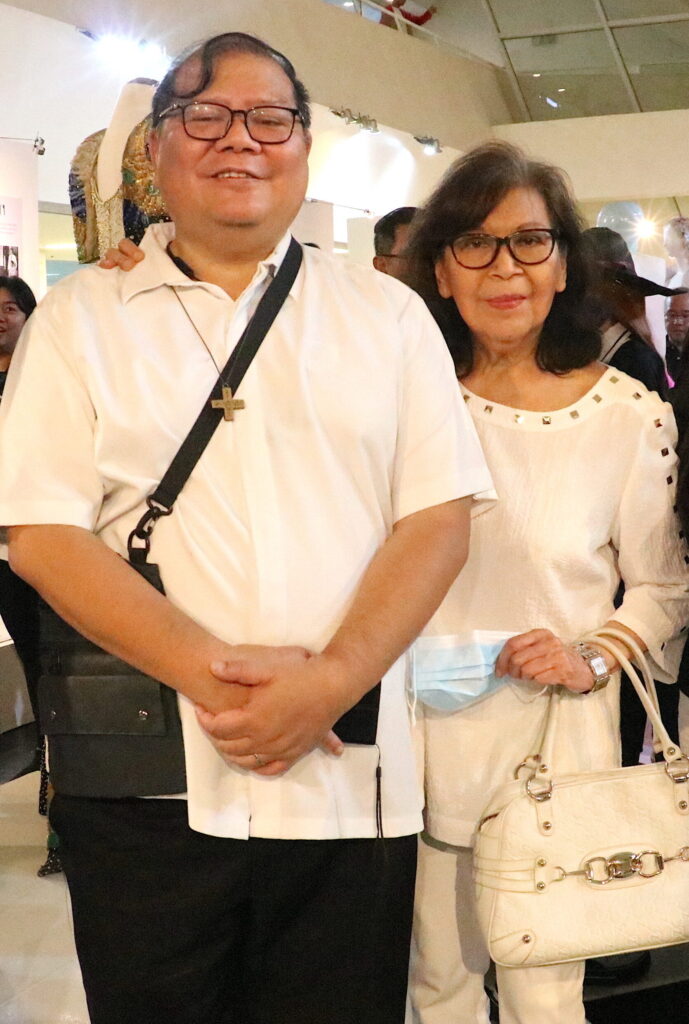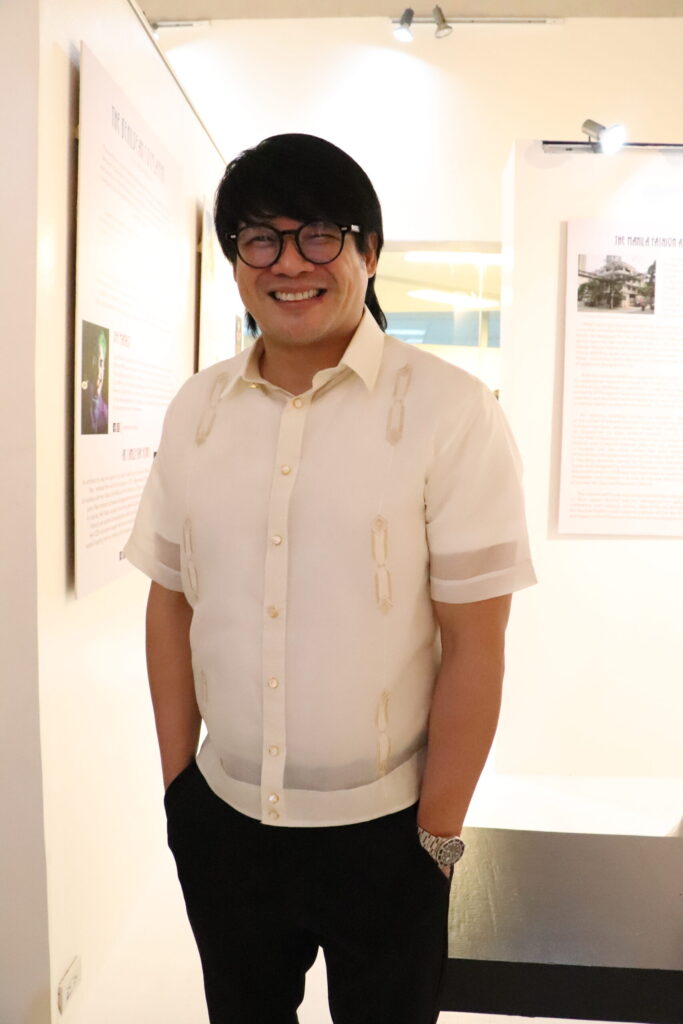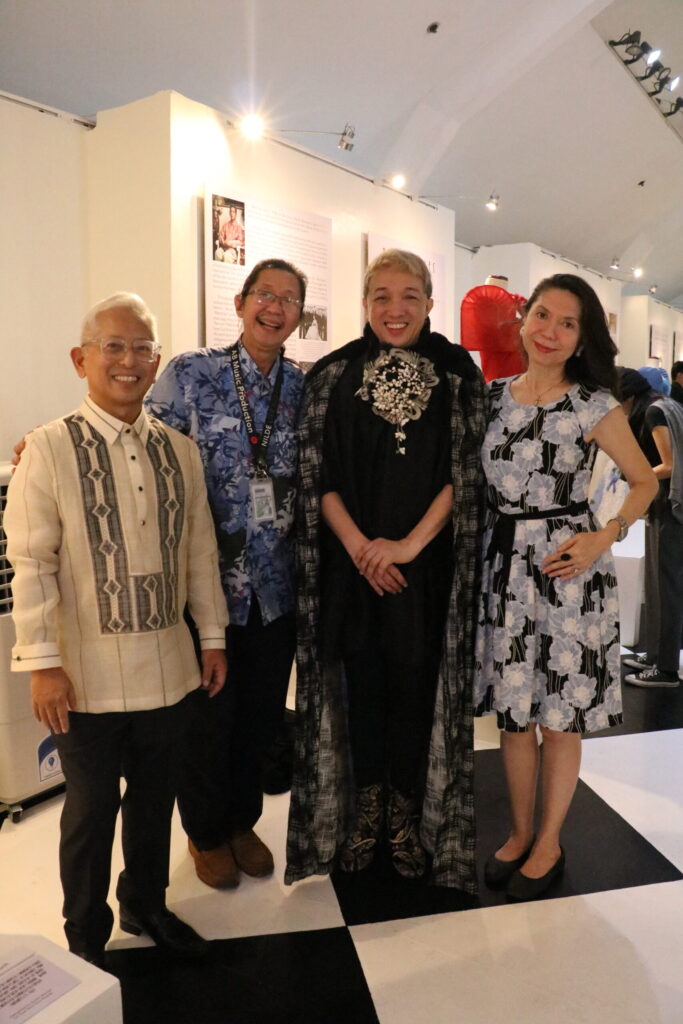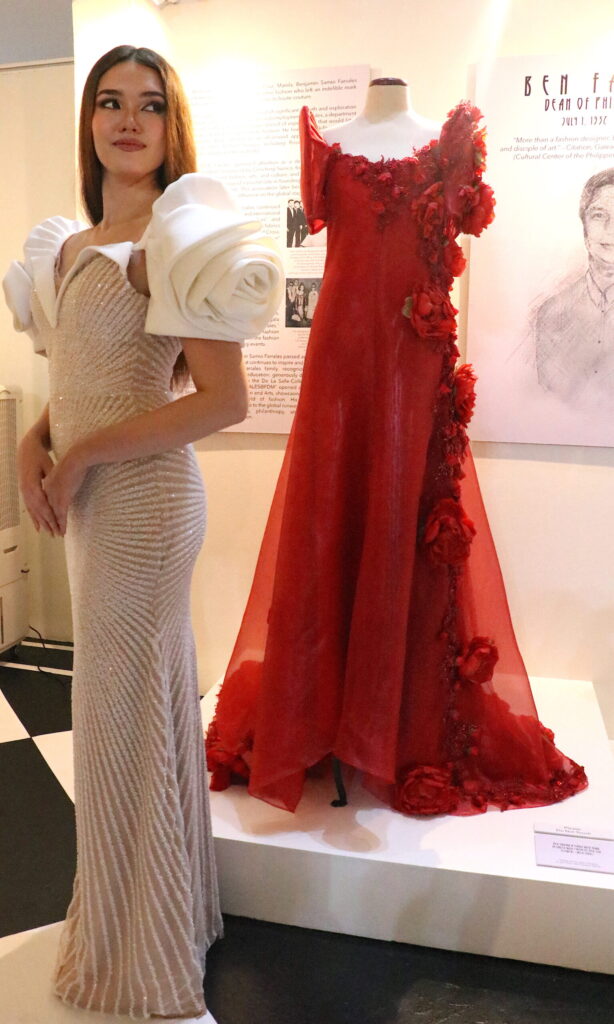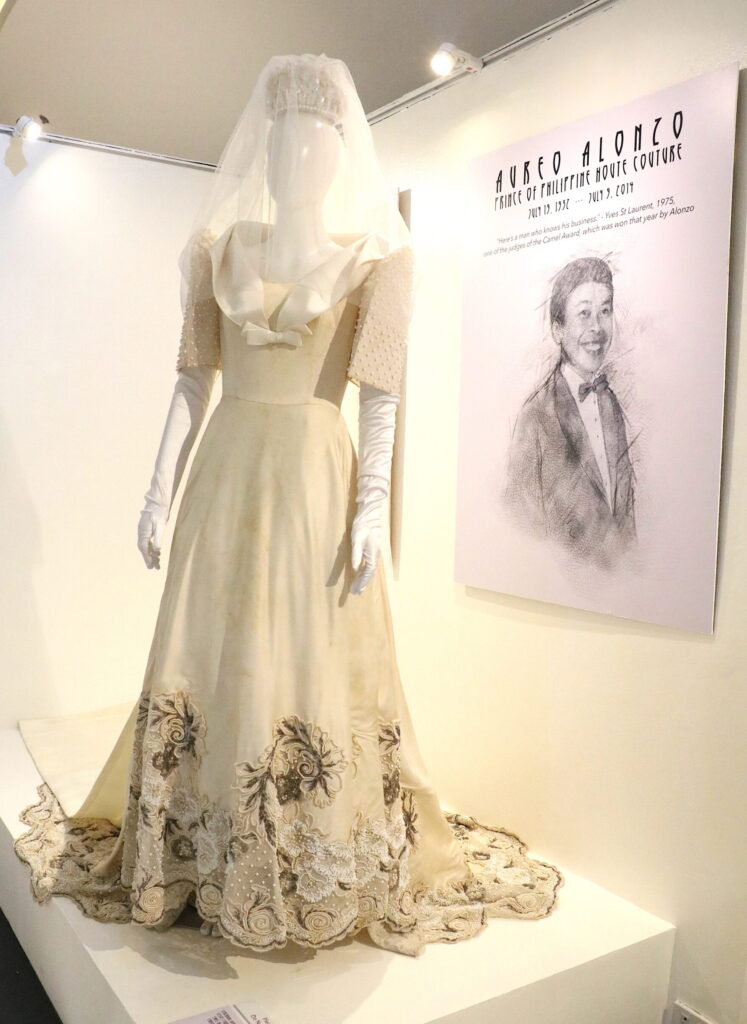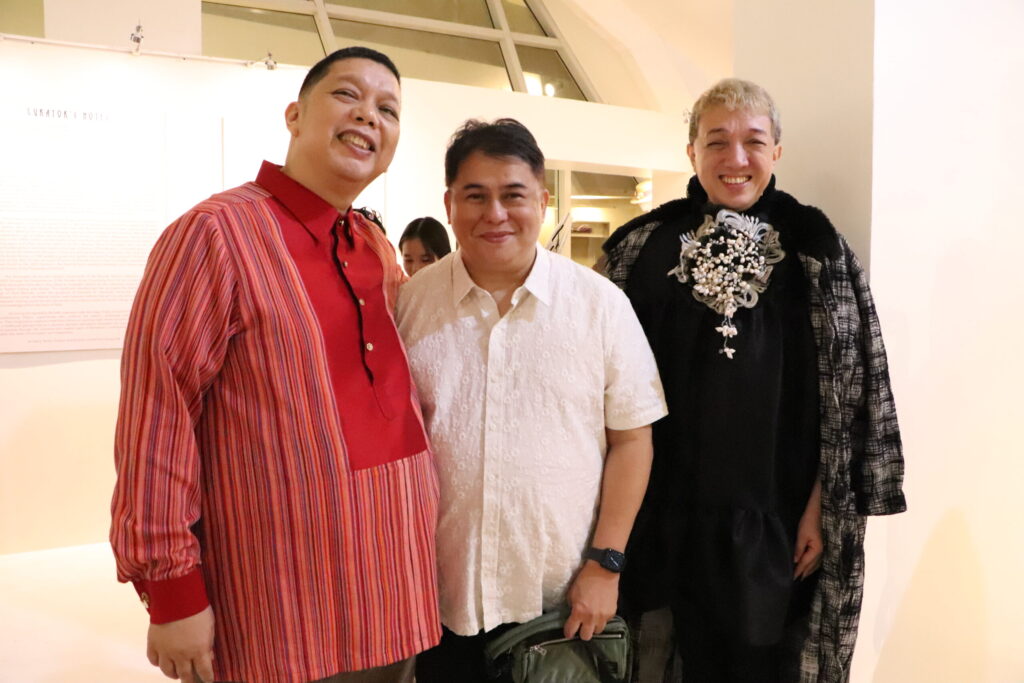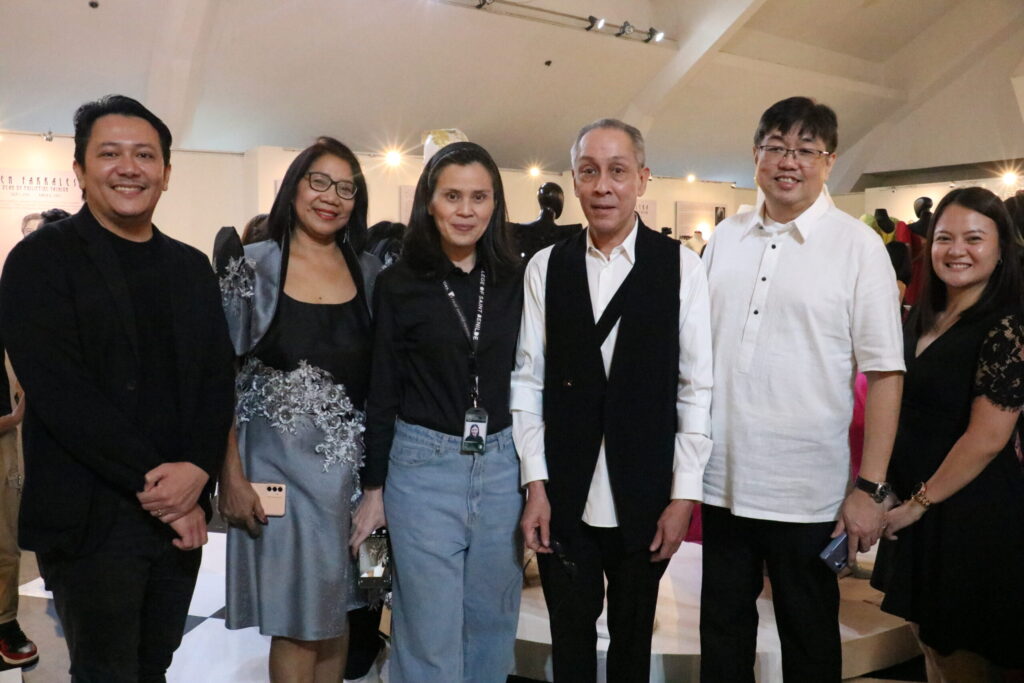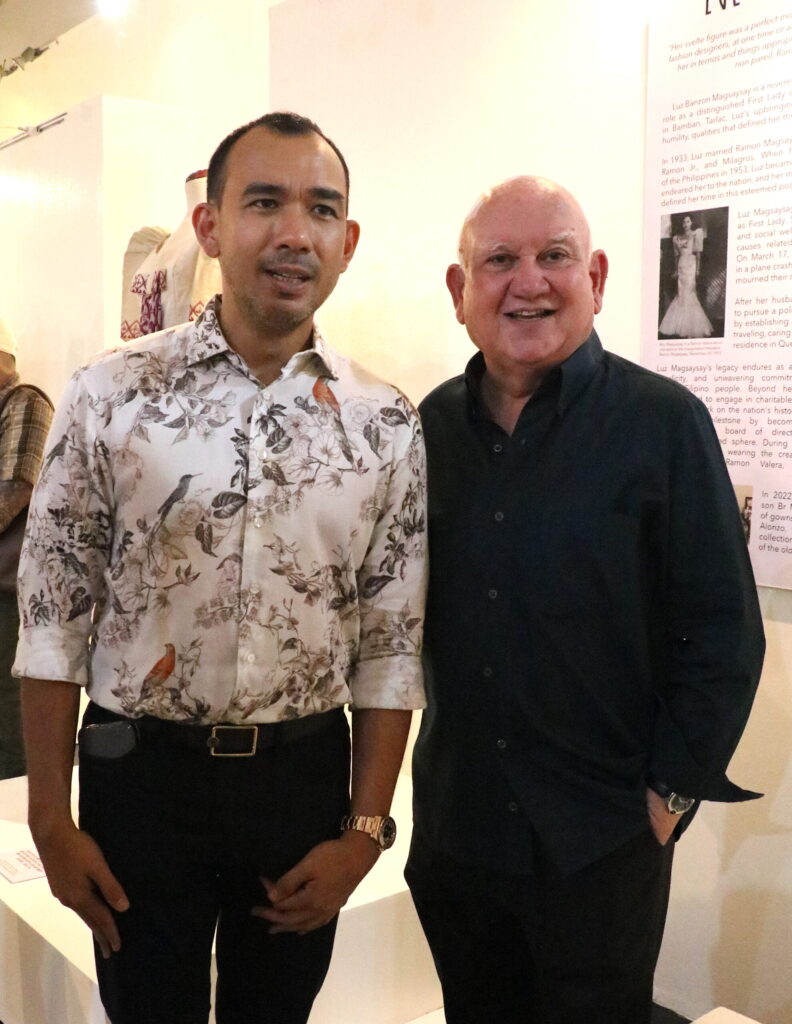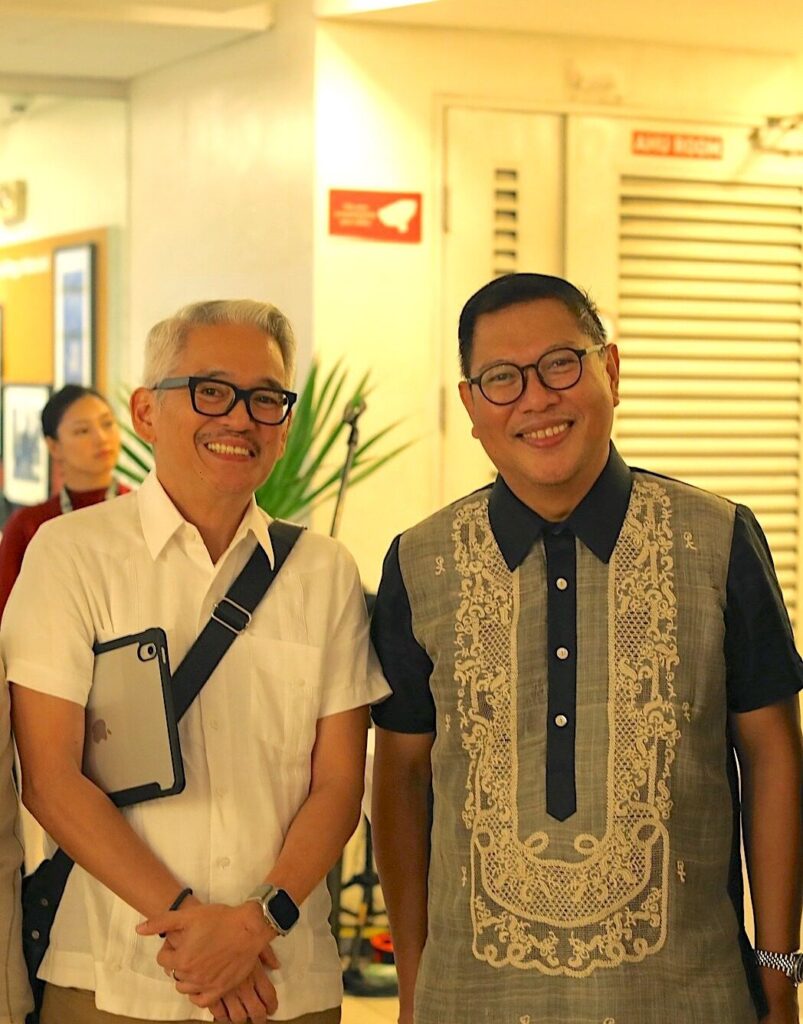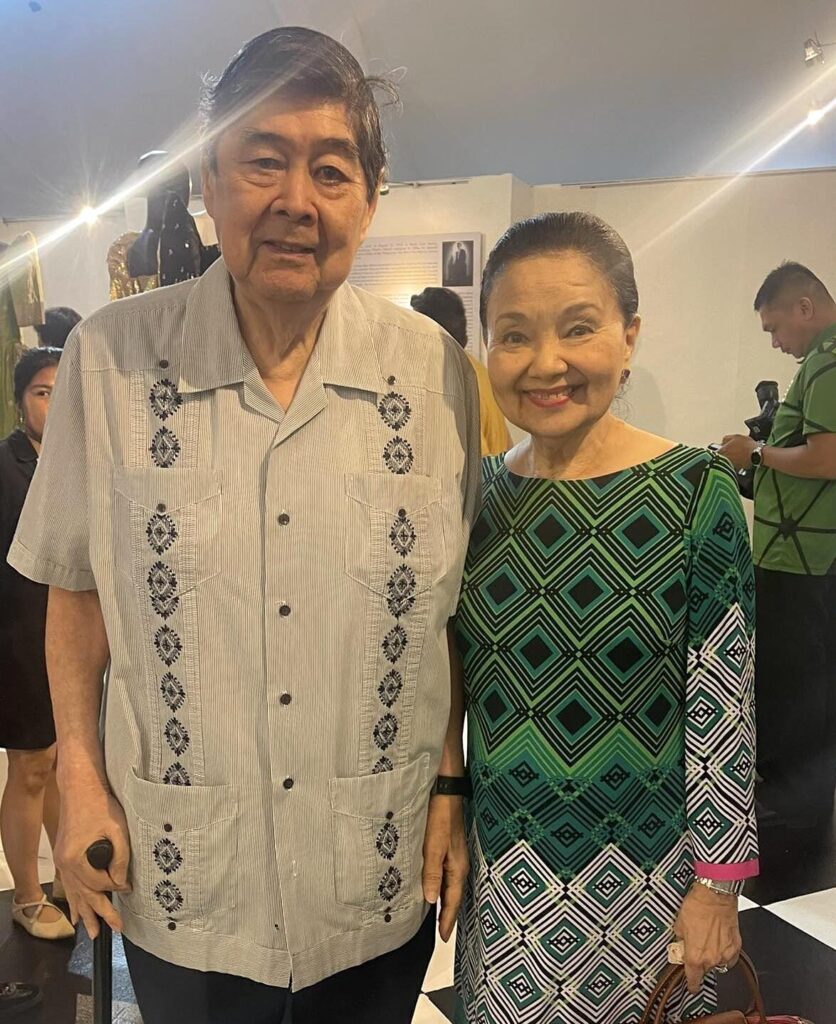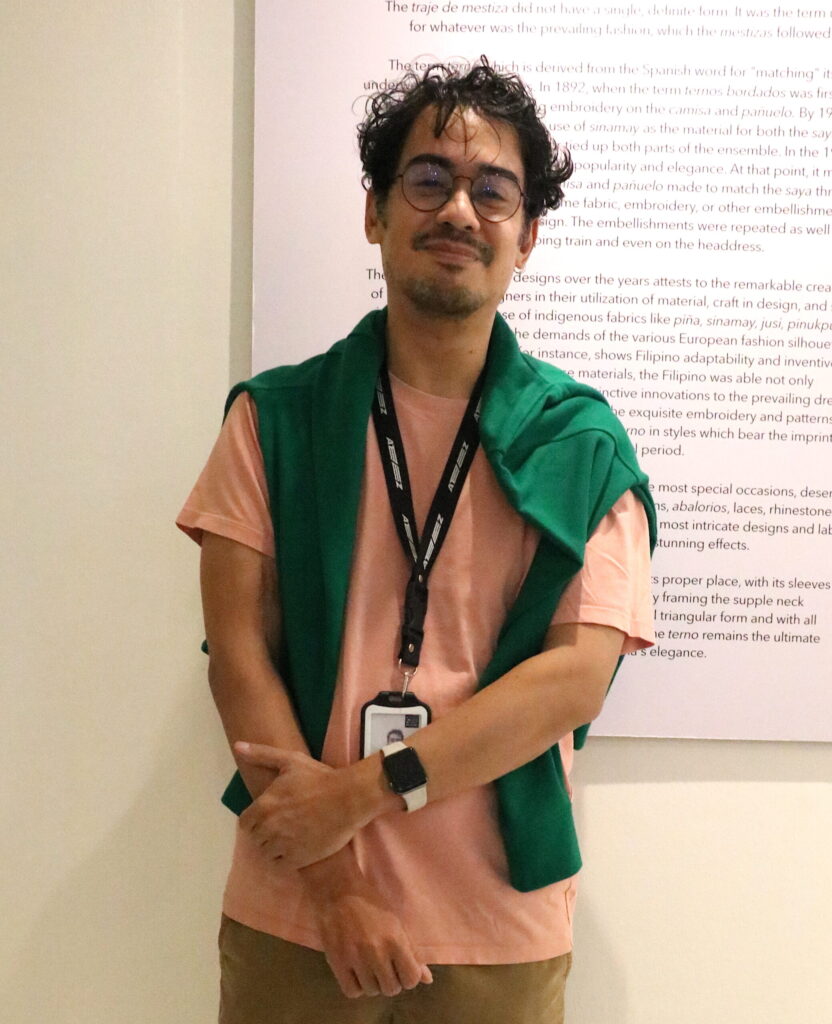The evening of Friday — the 13th — signaled auspicious times ahead for Philippine costume when the De La Salle-College of Saint Benilde Center for Campus Arts opened the exhibition, Fashion, Power, Modernity: The Ternos of the Benilde Collection, featuring 31 quintessential creations of National Artist Ramon Valera, Asian Czar of Fashion Jose Moreno, Dean of Fashion Ben Farrales and the Prince of Philippine Fashion and sole Filipino recipient of the Camel Award, Aureo Alonzo.
Among those appreciated by the guests were ternos donated by the designers’ former muses and clients or their heirs. Conchitina Sevilla Bernardo shared a black terno designed by Jose Moreno, along with the Sevilla mother-and-daughter portrait by Antonio Garcia Llamas. Bambi Lammoglia Harper presented several creations of Ben Farrales who considered her his foremost muse and had dressed her up when she won the first search for the Filipina Maid of Cotton.
Mila Magsaysay Valenzuela was all smiles as the guests complimented her mom, former First Lady Luz Magsaysay, whose pictures highlighted her beautiful countenance and slim figure in her Ramon Valera Filipiniana wear. Vicky Iglesias Rodriguez gladly shared her flowing wedding gown, minus the long train that had been donated to the Carmelite Sisters who, we learned, would ask brides to donate their trains that, in turn, were converted to adorn the Virgin Mary or her carosa.
Fashion designer Eric Pineda represented Ramon Valera with his mother’s bridal gown. The family of Ben Farrales donated the core of the exhibit, which represented various eras in the designer’s long successful career from the 1960s to the turn of the 21st century. Underscoring the significance of the terno in Filipiniana wear, Architect Gerry Torres, College of Saint Benilde Center for Campus Arts curator, said in his welcome address: “Over the years, the terno has evolved into more than just a garment. It has transformed into a distinguished national costume and, at times, a symbol of power. This iconic attire has become the preferred choice for accomplished women during formal occasions, such as wedding, galas and significant political events. Its international presence is notable in beauty pageants, fashion shows and state visits, reflecting its global recognition.
“Remaining a steadfast element in Philippine fashion, the terno continually offers fashion designers limitless opportunities for reinvention and innovation. At its essence, it is more than a dress; it is a representation of cultural identity. Defined by its exaggerated and stiffened ‘butterfly’ sleeves, gathered waist, ankle-length or adorned with a longer train and a discreet zip at the back, the terno encapsulates both tradition and modernity in a single, iconic piece.”
On the same occasion, Benilde president Bro. Edmundo Fernandez, FSC, announced the institution’s plan to establish “the Manila Fashion and Costume Institute, which will house the donations. It will also serve as a learning center focused on the study, safekeeping, exhibition, conservation, research and promotion of fashion design and history, primarily of Philippine couture from the 20th and 21st centuries. An existing building located at Benilde’s main campus at the corner of Estrada and Leon Guinto, called Miguel Febres Cordero, has been earmarked to house the institute.
Bro. Fernandez concluded, “Once realized, the Benilde Fashion and Costume Institute will be the first of its kind in the country, honoring the work and legacy of the Philippines’ foremost designers for the benefit of future generations.”
